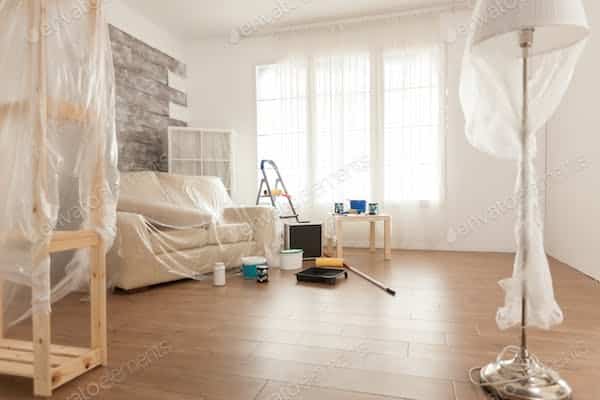What innovative solutions can be employed to retrofit existing buildings for improved energy efficiency in real estate portfolios?

When it comes to reducing carbon footprints and promoting sustainability, the real estate sector plays a crucial role. As guardians of the built environment, property owners and managers can significantly influence the energy efficiency of their real estate portfolios. This article delves into a spectrum of innovative solutions that can be employed to retrofit existing buildings for improved energy efficiency. Through a clear, professional, and journalistically-styled narrative, you will be introduced to cutting-edge technologies and practices that are redefining the bounds of energy-efficient retrofitting.
High-Performance Building Envelopes
The exterior of a building, known as the building envelope, plays a significant role in determining its energy efficiency. The building envelope includes elements like the roof, walls, windows, doors, and foundation.
Dans le meme genre : How to leverage nanotechnology for advanced building materials in real estate construction?
Innovations in building envelope design and technology can significantly improve a structure’s energy efficiency. High-performance building envelopes, which incorporate advanced materials and construction techniques, can dramatically reduce heat loss in winter and heat gain in summer, leading to substantial energy savings.
One such innovation is the use of phase change materials (PCMs). PCMs absorb and release heat as they change state, helping to regulate indoor temperatures and reduce the need for mechanical heating and cooling. Another promising technology is vacuum insulation panels (VIPs), which offer superior insulation performance compared to conventional materials, thanks to their near-vacuum core.
Lire également : What are the best practices for designing senior-friendly real estate projects that promote independence and social engagement?
Smart HVAC Systems
Heating, ventilation, and air conditioning (HVAC) systems account for a significant portion of a building’s overall energy consumption. Upgrading to a smart HVAC system can drastically reduce this energy usage.
Smart HVAC systems are equipped with advanced sensors and machine learning algorithms that allow them to adapt to changing environmental conditions and occupancy patterns. This means they can provide optimal comfort while using the least amount of energy possible.
Besides, IoT-enabled HVAC systems can be integrated with other building systems like lighting and blinds, enabling a coordinated approach to energy management. Regular maintenance is also vital in ensuring the efficient operation of these systems.
Energy Efficient Lighting
Lighting is another area where energy savings can be realized in existing buildings. By replacing outdated lighting fixtures with energy-efficient LED lights, building owners can reduce their energy consumption by up to 75%.
In addition to LED lights, there are other innovative solutions like adaptive lighting systems that adjust the intensity of lighting based on occupancy and availability of natural light. These systems use sensors and control systems to optimize lighting use, thereby reducing energy waste.
Renewable Energy Sources
The addition of renewable energy sources is another effective way to improve the energy efficiency of existing buildings. Solar panels and wind turbines can be installed on rooftops or nearby land to generate electricity, significantly reducing reliance on grid-based power.
Moreover, technologies like solar water heaters and ground-source heat pumps can provide renewable thermal energy, further enhancing energy savings.
Green Roofs and Walls
Green roofs and walls have recently gained traction as an innovative solution for increasing the energy efficiency of existing buildings. By covering a roof or wall with vegetation, these living structures provide excellent insulation, reducing the need for mechanical heating and cooling.
Not only do green roofs and walls reduce energy consumption, but they also offer additional benefits like stormwater management, biodiversity promotion, and urban heat island mitigation.
In conclusion, retrofitting existing buildings for improved energy efficiency is a complex but achievable task. With the adoption of innovative technologies and practices outlined in this article, building owners and managers can ensure their real estate portfolios are not only energy-efficient but also sustainable and resilient in the face of climate change.
Building Automation and Control Systems
Building Automation and Control Systems (BACS) represent a significant step forward in the field of energy efficiency. These systems allow for centralized, automated control of a building’s various systems, including HVAC, lighting, and security. With the ability to monitor and adjust these systems in real-time or via pre-set schedules, BACS can significantly reduce the energy usage of a building.
A key component of BACS is the Building Management System (BMS), a computer-based system that provides real-time monitoring and control over the building’s systems. The BMS can gather data from various sensors throughout the building, allowing it to readily adapt to changes in occupancy, weather conditions, and other factors that can affect energy usage. For instance, it can automatically dim the lights in a room when it detects it’s unoccupied, or ramp up the HVAC system ahead of a meeting to ensure optimal comfort for the attendees.
Furthermore, BACS can utilize predictive analytics and machine learning to improve their efficiency over time. By analyzing the collected data, they can identify trends and patterns in energy usage and adjust their operations accordingly. For instance, if the system notices that a particular room is consistently underutilized during certain hours, it can schedule to reduce HVAC and lighting in that room during those times.
Building Energy Modeling
Building Energy Modeling (BEM) is a technique for predicting the energy usage of a building. By creating a digital model of the building and simulating its energy use under different conditions, BEM can identify potential areas for energy savings.
Using BEM, a building owner can estimate the energy performance of a building even before the actual retrofit process. By adjusting the parameters in the simulation, such as the insulation of the envelope, the efficiency of the HVAC system, and the lighting setup, the owner can see the effect on the building’s overall energy consumption. This helps to make informed decisions about which retrofits will offer the most significant energy savings.
BEM can also be used after the retrofit to monitor the building’s performance and ensure that the implemented measures are having the desired effects. If the actual performance deviates from the model, it can point to areas where the retrofit may not have been implemented correctly or to unforeseen issues that need to be addressed.
Conclusion
The journey towards achieving energy efficiency in existing buildings involves a myriad of innovative solutions. These range from high-performance building envelopes and smart HVAC systems to energy-efficient lighting and renewable energy sources. Green roofs and walls offer multiple benefits beyond energy savings, while Building Automation and Control Systems and Building Energy Modeling provide a sophisticated approach to energy management.
By exploring and implementing these solutions, property owners and managers can transform their real estate portfolios into sustainable, energy-efficient establishments. Not only does this lead to cost savings in the long run, but it also contributes to the global effort to minimize carbon emissions and combat climate change. Retrofitting existing buildings for energy efficiency is not only socially responsible, but it also makes sound business sense.
